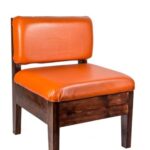Are you tired of dealing with weak or unreliable Wifi signal in your home? In this article, we will explore how to improve wifi signal strength in your home. We will discuss the various factors that can affect the strength of your wifi signal and provide practical tips and solutions to help you optimize your home network for better performance.
First, we will delve into understanding the factors that can impact Wifi signal strength. From physical obstructions to electronic interference, there are several variables that can affect the quality of your Wifi connection. By gaining a better understanding of these factors, you can take targeted steps to address them and improve the overall signal strength in your home.
Next, we will guide you through conducting a Wifi signal strength assessment in your home. This step is crucial in identifying the areas where the signal may be weak or inconsistent, allowing you to pinpoint areas that require attention. Armed with this knowledge, you can then make informed decisions on how to optimize your Wifi network for better coverage and performance.
Once you have assessed the current state of your Wifi signal, we will discuss how choosing the right Wifi router can make a significant difference in boosting signal strength. From selecting a router with appropriate features to considering different antenna options, making an informed choice when it comes to your router can greatly impact the overall performance of your home network.
Conducting a Wifi Signal Strength Assessment in Your Home
Before diving into the various ways to improve your Wifi signal strength, it’s important to first assess the current state of your home network. Conducting a Wifi signal strength assessment will help you identify problem areas and understand the factors affecting your signal strength. Here’s how you can conduct a thorough assessment:
1. Locate dead zones: Walk around your home with a device connected to your Wifi network and take note of any areas where the signal is weak or non-existent. These areas are often referred to as “dead zones” and are prime targets for improvement.
2. Measure signal strength: Use a Wifi analyzer app or built-in tools on your router to measure the signal strength in different parts of your home. Note down the readings in various rooms to get an idea of where the signal is strongest and weakest.
3. Identify sources of interference: Take note of any electronic devices, appliances, or physical obstructions that could be causing interference with your Wifi signal. Common culprits include microwave ovens, cordless phones, and thick walls or floors.
By conducting this assessment, you’ll have a better understanding of which areas need improvement and where to focus your efforts on boosting your Wifi signal strength.
Once you’ve completed the assessment, it’s time to move on to actively improving your home Wifi network based on the findings. Whether it’s through router upgrades, optimal placement, or minimizing interference, addressing these issues will lead to a stronger and more reliable connection throughout your home.
Choosing the Right Wifi Router for Better Signal Strength
Understanding the factors that affect Wifi signal strength is crucial when it comes to improving the Wifi signal in your home. Factors such as distance from the router, obstacles like walls and furniture, and interference from other electronic devices can all contribute to a weaker signal. To improve your Wifi signal strength, it’s important to address these factors and make necessary changes.
When conducting a Wifi signal strength assessment in your home, start by identifying areas with weak or no signal. This will help you determine the best placement for your router and if additional equipment like extenders or boosters are needed. Using tools like a Wifi analyzer app can also help identify areas with poor signal strength, giving you a clear understanding of where improvements are needed.
Choosing the right Wifi router is essential for better signal strength. Look for routers with features like dual-band technology, beamforming, and multiple antennas for improved coverage. Investing in a high-quality router can significantly enhance the overall performance of your Wifi network.
| Wifi Router Feature | Effect on Signal Strength |
|---|---|
| Dual-band technology | Allows for more devices to connect and reduces interference |
| Beamforming | Directs Wifi signals towards connected devices for better coverage |
| Multiple antennas | Enhances signal strength and range |
By understanding how to improve wifi signal strength in your home through choosing the right router, you can ensure that every corner of your household has strong connectivity.
Optimal Router Placement for Maximum Signal Coverage
When it comes to improving the Wi-Fi signal strength in your home, one of the most important factors to consider is the placement of your router. The position of your router can significantly impact the quality and coverage of your Wi-Fi signal. In this section, we will discuss how you can optimize the placement of your router for maximum signal coverage.
Understanding Optimal Router Placement
To improve Wi-Fi signal strength in your home, it’s essential to understand the concept of optimal router placement. Ideally, the router should be placed in a central location within your home. This allows for a more balanced distribution of the Wi-Fi signal throughout different areas of your house. Additionally, positioning the router at an elevated level can help improve its overall coverage.
Avoiding Obstacles and Interference
When considering optimal router placement, it’s crucial to avoid potential obstacles and sources of interference that could weaken the Wi-Fi signal. Obstructions such as walls, furniture, and electronic devices can interfere with the transmission of the signal. By placing the router in an open area free from such obstructions, you can maximize its signal coverage.
Consideration for Multiple Access Points
In larger homes or spaces with multiple floors, a single router may not provide adequate coverage. In such cases, considering multiple access points or utilizing Wi-Fi extenders can help ensure comprehensive signal coverage throughout your home. By strategically placing these additional access points or extenders in areas where the Wi-Fi signal is weaker, you can effectively improve overall signal strength.
By understanding and implementing these tips for optimizing the placement of your router, you can significantly improve Wi-Fi signal strength in your home. Experimenting with different placements and considering potential obstacles and sources of interference can make a noticeable difference in the quality and coverage of your Wi-Fi network.
Utilizing Wifi Signal Boosters and Extenders
One of the most effective ways to improve wifi signal strength in your home is by utilizing wifi signal boosters and extenders. These devices work by amplifying the existing wifi signal and extending its coverage to areas where the signal may be weak or non-existent. They can be a game-changer for homes with multiple floors, thick walls, or large living spaces that make it challenging for the wifi signal to reach every corner.
Types of Wifi Signal Boosters and Extenders
When it comes to choosing a wifi signal booster or extender, there are several options available in the market. The most common types include plug-in range extenders, mesh wifi systems, and high-gain antennas. Each type has its own set of features and benefits, so it’s important to consider your specific needs and home layout before making a selection.
Installation and Placement
Once you have chosen the right wifi signal booster or extender for your home, proper installation and placement are crucial for maximizing its effectiveness. It’s important to place the booster or extender in a location where it can receive a strong wifi signal from your router while still being able to extend the coverage to areas with weak signal strength.
Additionally, ensuring that the device is set up correctly according to the manufacturer’s instructions is essential for optimal performance.
Benefits of Wifi Signal Boosters and Extenders
By incorporating wifi signal boosters and extenders into your home network setup, you can experience significant improvements in wifi signal strength throughout your living space. This means faster internet speeds, more reliable connections, and better overall performance for all of your connected devices. It’s an investment that can make a noticeable difference in your daily online activities, whether it’s streaming movies, gaming, video conferencing, or simply browsing the web.
Upgrading Your Wifi Antennas for Improved Signal Strength
When it comes to improving the Wifi signal strength in your home, upgrading your Wifi antennas can make a significant difference. Most routers come with standard antennas, but replacing them with high-gain or directional antennas can enhance the coverage and reach of your Wifi network. High-gain antennas are designed to focus the Wifi signal in specific directions, while directional antennas can be pointed towards the areas where you need stronger signal.
One important thing to consider when upgrading your Wifi antennas is compatibility. Make sure that the antennas you choose are compatible with your router model and frequency band. Additionally, positioning of the upgraded antennas is crucial for optimal performance. It’s recommended to place them at a higher position and in an open area to minimize obstructions and interference.
In addition to upgrading your router’s main antennas, you may also consider adding external antennas to devices that tend to have weaker Wifi signals, such as desktop computers or gaming consoles. This can further improve the overall Wifi signal strength in your home.
| Wifi Antenna Type | Benefit |
|---|---|
| High-gain Antennas | Focused signal direction for targeted coverage |
| Directional Antennas | Pointed signal towards specific areas for stronger connection |
| External Device Antennas | Improves signal strength for individual devices |
Minimizing Interference for a Stronger Wifi Signal
When it comes to improving the wifi signal strength in your home, minimizing interference is crucial. By reducing the sources of interference, you can optimize your wifi network for better performance and a stronger signal. Here are some tips for minimizing interference and improving your wifi signal:
1. Identify Sources of Interference: Start by identifying potential sources of interference in your home. Common culprits include microwave ovens, cordless phones, baby monitors, and other electronic devices that operate on the same frequency as your wifi router. Make a list of these devices and consider relocating them or using them less frequently to reduce interference.
2. Choose the Right Channel: Wifi routers operate on different channels within the 2.4GHz and 5GHz frequency bands. Use a wifi analyzer tool to determine which channels are less congested in your area and manually set your router to operate on those channels. This can minimize interference from other nearby wifi networks and improve signal strength.
3. Upgrade to a Dual-Band Router: Consider upgrading to a dual-band router that operates on both 2.4GHz and 5GHz frequencies. This allows you to spread out your devices between the two bands, reducing congestion and minimizing interference for a stronger wifi signal.
By taking these steps to minimize interference, you can improve the overall performance and signal strength of your wifi network in your home.
Remember that understanding how to improve wifi signal strength in your home can lead to better internet connectivity for all of your devices.
Tips for Optimizing Your Wifi Network for Better Performance
Is your home Wifi network not performing as well as you’d like it to? There are a number of factors that can affect the strength of your Wifi signal, and in this section, we’ll discuss some tips for optimizing your Wifi network to improve performance. By following these tips, you can ensure that you are getting the best possible signal strength and coverage in your home.
One of the most important things you can do to improve your Wifi signal strength is to choose the right router. Not all routers are created equal, and some may not be able to provide the coverage and speed that you need. Look for a router that offers dual-band support, strong antenna capabilities, and advanced features such as beamforming technology. This will help ensure that you have a reliable and fast connection throughout your home.
In addition to choosing the right router, optimal placement is also crucial for maximizing signal coverage. You should place your router in a central location in your home, away from other electronics and obstructions. Keep it elevated off the floor and try to avoid placing it near walls or large objects that could disrupt the signal. By strategically placing your router, you can help ensure a strong Wifi signal throughout your entire home.
Finally, consider utilizing Wifi signal boosters or extenders if you have areas in your home where the Wifi signal is weak or unreliable. These devices can help extend the range of your Wifi network and improve overall coverage. When used strategically, they can make a significant difference in improving Wifi signal strength in areas where it was previously lacking.
By following these tips for optimizing your Wifi network, you can significantly improve its performance and enjoy a reliable and fast connection throughout your home.
Troubleshooting Common Wifi Signal Strength Issues
In conclusion, improving the Wifi signal strength in your home is crucial for a seamless and efficient internet experience. Understanding the factors that affect Wifi signal strength, such as distance from the router, interference, and obstructions, is the first step in addressing any connectivity issues. Conducting a Wifi signal strength assessment in your home can help identify areas with weak signal coverage, allowing you to implement targeted solutions.
Choosing the right Wifi router is essential for better signal strength. Look for routers with multiple antennas, dual-band capabilities, and advanced features such as beamforming technology. Optimal router placement is also key to maximizing signal coverage throughout your home. Place the router in a central location and away from obstructions for the best results.
In addition to selecting the right router and optimizing its placement, utilizing Wifi signal boosters and extenders can further enhance your network’s coverage. Upgrading your Wifi antennas and minimizing interference from other electronic devices are also effective ways to improve signal strength.
By following these tips for optimizing your Wifi network for better performance, you can enjoy a reliable and strong internet connection throughout your home. With these strategies in mind, troubleshooting common Wifi signal strength issues becomes more manageable, ensuring that you have a consistently robust Wifi network.
Frequently Asked Questions
How Can I Boost My Wi-Fi Signal in My House?
A simple way to boost your Wi-Fi signal in your house is by repositioning your router to a more centralized location. Additionally, upgrading to a newer, higher-quality router can also improve signal strength and coverage.
Why Is My Wi-Fi Signal So Weak in My House?
There are several reasons why your Wi-Fi signal may be weak in your house. It could be due to physical barriers like walls and furniture obstructing the signal, interference from other electronic devices, or even an outdated router that’s no longer able to provide strong coverage.
How Can I Get Full Wi-Fi Coverage in My House?
To get full Wi-Fi coverage in your house, you can consider using a Wi-Fi range extender or a mesh network system. This will help extend the reach of your Wi-Fi signal to all areas of your home, ensuring consistent coverage throughout.
Additionally, upgrading to a more powerful router with better coverage capabilities can also help achieve full Wi-Fi coverage in your house.

I’m thrilled to have you here as a part of the Remodeling Top community. This is where my journey as an architect and remodeling enthusiast intersects with your passion for transforming houses into dream homes.





